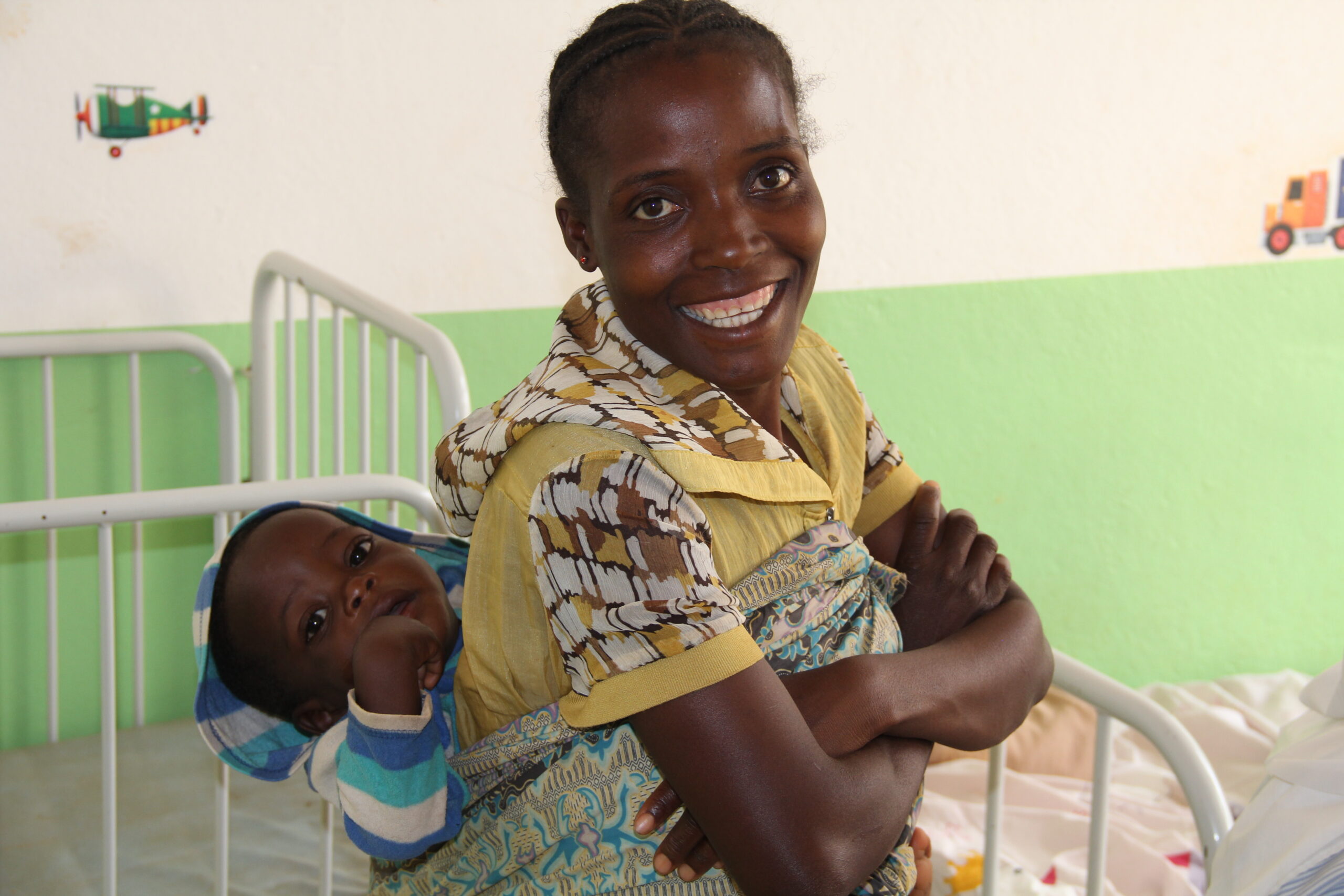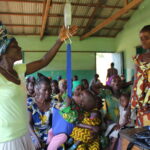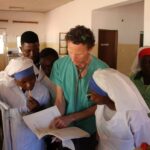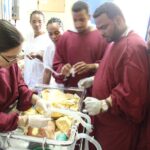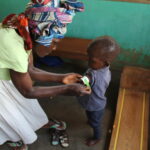6 Lifesaving Interventions for Children in Low-income Countries
Saving the lives of children is one of the greatest joys of medical mission work. What if you could save the lives of not a few but of many children? This blog shares six very basic interventions that can help you achieve that aim.
According to the World Health Organization (WHO) estimates on child mortality, 5.9 million children under age five died in 2015, about 16,000 every day. The risk of a child dying before the age of five is still highest in the WHO African Region at 81 per 1000 live births, which is a dramatic seven times higher than in developed countries. For comparison, in the WHO European Region that number is about 11 per 1000 live births. The under-five mortality in low-income countries remains unacceptably high averaging 76 deaths per 1000 live births. This is about 11 times the average in developed countries, which is 7 deaths per 1000 live births.
We believe short-term and long-term medical missions have an important role to play in reducing these inequities across the world. However, the extent of the effectiveness of our medical missions on child mortality will be directly correlated to the level at which we learn and engage with international standards for the care of children in low-income countries. These six interventions, if used and promoted widely, can at help engage medical missions in this important fight.
The doses listed in this blog post represent current recommendations published by the WHO although this blog post is meant only as an overview of information. It is not a comprehensive study of dosing or treatment modalities. We recommend downloading the reference from which these dosing recommendations were obtained. To download the IMCI chart booklet for dosing and process information IMCI Chart Booklet and Dosing Reference Guide. The complete computer-based IMCI training programs can be downloaded from the Christian Health Service Corps website at CHSC Clinical Resources.
Please use and share these six child lifesaving interventions for children living in resource-poor communities:
1. Promotion of exclusive breast feeding for infants younger than six months
This is probably the simplest of all interventions and yet it is the most effective. Communities should be educated on the importance of breast feeding. Improving exclusive breastfeeding practices of infants under six months of age has the greatest potential impact on child survival, higher than all other preventive interventions. According to Vesel et al (2009) improved breastfeeding practices could prevent over 800,000 deaths in children under age five every year. Simply counselling all mothers of young infants about the need for exclusive breast feeding can save the lives of many infants.
2. Immunizations
About 10% of the diseases affecting children under five years of age are preventable with vaccines. A review of 12 studies found that measles immunization was associated with reductions in total mortality that ranged from 30–86%. Additionally, providing vitamin A supplements as part of measles case management can reduce the case fatality rate by more than 50%. Collaborating with local health departments and ministries of health to deliver vaccinations in rural unreached areas remains an underutilized strategy by medical missions and global health programs. There are many barriers to vaccination delivery in rural villages for local governments. Limited personnel and maintaining cold chain are but a couple. This medical mission strategy could help close this gap for some regional health authorities and improve vaccination coverage. Few medical mission or service learning programs engage in this type of collaborative efforts, but these projects can have lasting impact on child survival in rural areas.
3. Parasite prophylaxis
Remember, many children in low income countries receive less than 50-75% of the daily-required caloric intake for growing children. Parasites further compromise the nutritional status of children. The WHO standard for parasite prophylaxis is to give all children one year or older mebendazole if they have not had a dose in the previous six months.
• Give 500mg mebendazole as a single dose in clinic if 1) hookworm/whipworm is a problem in the area in which you will be working, 2) the child is one year of age or older, or 3) the child has not had a dose in the previous six months.
4. Vitamin A treatment
In malnourished, micronutrient-deficient children, Vitamin A supplementation can reduce mortality by up to 23%. Vitamin A is important in interrupting the cycle of malnutrition that makes even mildly malnourished children susceptible to death in the event of a viral or bacterial illness. The vicious cycle of malnutrition and the way in which it claims the lives of even mildly malnourished children is illustrated below. It is an important topic to consider before seeing pediatric patients in developing countries. Malnutrition underlies more than 50% of the deaths of children under age five in the developing world. Diarrhea, acute respiratory illness, malaria, and vaccine-preventable diseases are the primary killers of children under five, but malnutrition is often the underlying factor that precipitates the child’s death.
Children in developing countries who exhibit any signs of malnutrition should receive Vitamin A in much higher doses than practitioners trained in developed countries are familiar with prescribing. It should be noted that active collaboration with local health authorities and record-keeping is a fundamental requirement.
• Give the first dose of Vitamin A any time after six months of age to ALL CHILDREN; thereafter, give Vitamin A every six months to ALL CHILDREN.
• Give an extra dose of Vitamin A (the same dose as for supplementation) as part of treatment if the child has measles or PERSISTENT DIARRHEA.
• If the child has had a dose of Vitamin A within the past month, DO NOT GIVE VITAMIN A.
• Always record the dose of Vitamin A given on the child’s chart (i.e., AGE, VITAMIN A DOSE).
• Dosage: Six months up to twelve months – 100,000 IU; one year and older – 200,000 IU
5. Zinc supplementation
Zinc supplementation has been shown to reduce diarrhea incidence by 18% and pneumonia incidence by 41%. All children age two months up to five years presenting with diarrhea should receive the following:
Instruct the mother on how much zinc to give (20-mg tab):
• Two months up to six months – half a tablet daily for 14 days; six months or older – one tablet daily for 14 days. Demonstrate to the mother how to give zinc supplements; have her verbalize and (ideally) demonstrate how to mix and give the first dose.
• Infants – dissolve tablet in a small amount of expressed breast milk, ORS, or clean water in a cup.
• Older children – tablets can be chewed or dissolved in a small amount of clean water in a cup.
6. Iron supplementation for Childhood Anemia
In developing countries, childhood anemia is a manifestation of micronutrient malnutrition and is often worsened by recurrent bouts of malaria. It is an extremely common symptom of mild to severe forms of malnutrition. According to the IMCI child health standards, all children who exhibit signs of anemia should receive the following: . TALC has hemoglobin color strips to use with finger-stick blood tests available at low cost for short-term global health initiatives. Palmar Pallor is the WHO standard for assessment of anemia in children in resource limited settings where there is blood hemoglobin measure available. Iron supplementation has also been shown to improve child development in children over age two and can have a significant affect on micronutrient-deficient children. Give iron daily for 14 days in the presence of childhood anemia.
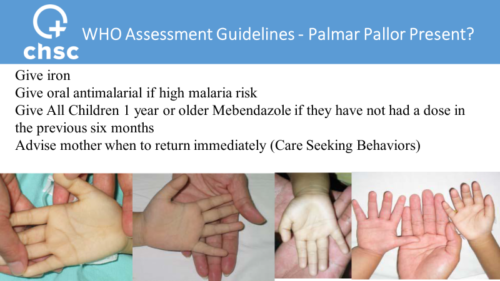
Give an oral antimalarial co-artemether in the presence of anemia in high malaria-risk areas as follows. Give the first dose of co-artemether in the clinic, and observe for one hour. If the child vomits within an hour, repeat the dose. The second dose is given at home after eight hours, then twice daily for a further two days as shown below; co-artemether should be taken with food.
World Health Organization, 2017)
Vesel, et al., 2009
Hill, Kirkwood, & Edmond, 2004
WHO/UNICEF, 2014
Hill, Kirkwood, & Edmond, 2004
WHO/UNICEF, 2014
Hill, Kirkwood, & Edmond, 2004
Hill, Kirkwood, & Edmond, 2004)
WHO/UNICEF, 2014
